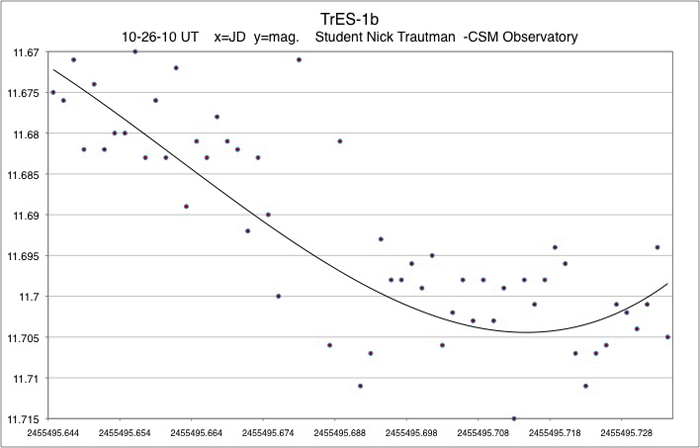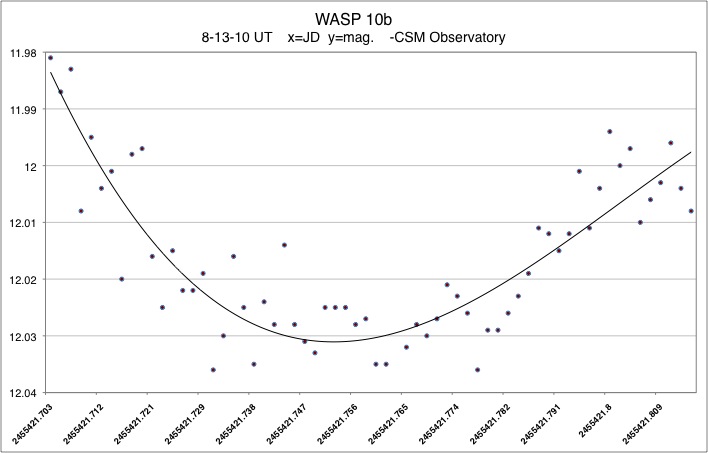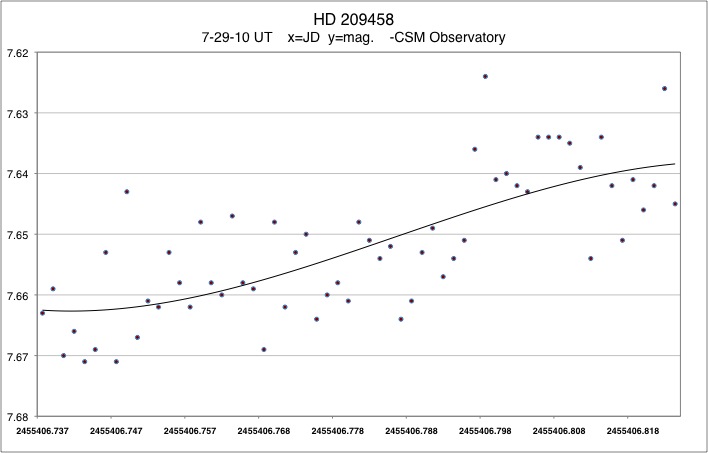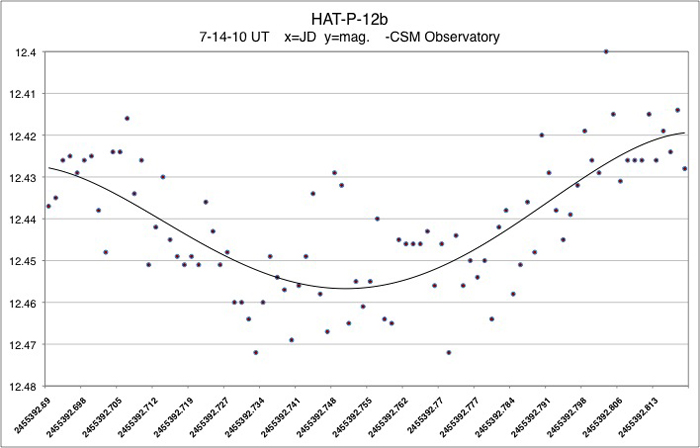Extrasolar Planet
Kepler "Planet Hunters" here.Here we present Extrasolar planet data from CSM observatory. Nearly 500 exoplanets (planets outside our solar system) have been discovered so far, most are Jupiter size. When a planet transits in front of the parent star, that star's brightness drops typically 1-2 percent, allowing us to measure and graph the event.
Kepler Mission, based at nearby NASA Ames Research Center, is looking for Earth-like planets in the "habitable zone." The site we use for ephemerides and information is ETD. See also TRESCA project.
Imaging is typically through a 140mm refractor, or 20" RC telescope. Exposure times vary from 60-120 seconds and 60 exposures are common for each imaging run. Dark frames and flat fields are applied to images prior to performing differential photometry, which includes the target star and 2-3 comparison stars in the field.
Comments are welcome here.
TrES-3b
TrES-3b is an extrasolar planet with almost twice the mass of Jupiter, orbiting star GCS3089-929 in Hercules. TrES-3b was discovered by the Trans-Atlantic Exoplanet Survey, and has an orbital period of only 1.3 days and a transit time of 77.4 minutes. Special Projects student Ido Liron, took this TrES-3b data with our 140mm TEC refractor and SBIG ST-10 CCD camera on the local night of 9-26-11.
KOI 882bKepler Objects Of Interest (KOIs) are stars which may have one or more transiting exoplanets. KOI 882b lies at RA 19h 43m 20s and DEC +42d 56m 35s.
TrES 1b
CSM student Nick Trautman took data of TrES-1b on 10-26-10 (UT). Discovered by Trans-Atlantic Exoplanet Survey, TrES 1b lies 512 light years away in Lyra, and orbits its parent star every 3 days. TrES-1b's total transit time is 149.8 minutes. Nick's data shows the beginning and middle of transit.
GJ 1214 b
Student Kellen Martin gathered data of exoplanet GJ 1214 b on the local evening of 9-30-10. Kellen's light curve shows the 2nd half of transit. During transit, GJ 1214b causes a 1.7% drop in brightness of its parent star, 40 light years away in Ophiuchus. Interesting article on GJ 1214b here. GJ 1214b was discovered by MEearth Project.
Wasp 10b
Wasp-10b orbits its parent star (GSC 2752-114) in Pegasus every 3 days, and transits in only 127 minutes! Data was taken 8-13-10 (UT) with our 140mm refractor and ST7 CCD camera. Wasp-10b is 8% larger than Jupiter, and 3 times more massive! (Wikipedia).
HD 209458
Exoplanet HD 209458 orbits its parent star, (SAO 107623) 150 light years away in Pegasus. SAO 107623 shines at V-mag. 7.6, and drops by 1.6% in brightness during transit. Our data includes 60, one minute exposures through a V filter. We imaged the second half of transit. JD converter here. Data here.
HAT-P-12b
Discovered in 2009 by HATNet Project, HAP-P-12b lies 465 light years away in Canes Venatici, and orbits a 12.8 magnitude K star. Imaging: 140mm f/7 refractor. ST7-XME CCD. 90x60 seconds, no filter. Data here.
